Flood threat poses a real risk to homes in Brisbane and I’m sure we all remember the devastation of the most recent 2011 floods. Fortunately for those looking to build in Brisbane, past disasters have allowed the council to create flood maps to prepare us should it happen again.
These Brisbane flood maps can be quite difficult to read, however. Here we’ll teach you how to use this important tool to ensure you know the risk to your new home with our Brisbane flood maps how-to guide.
How to check your flood risk
Step 1: Open the Brisbane Flood Awareness Map here: BRISBANE FLOOD AWARENESS MAP
Step 2: Enter your address here:
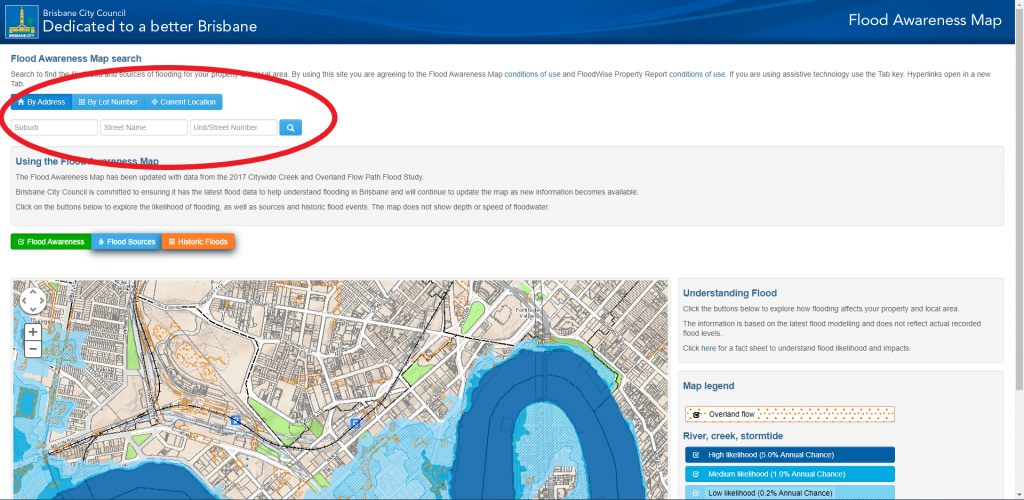
Step 3: Generate a Flood Wise Property Report by clicking here:
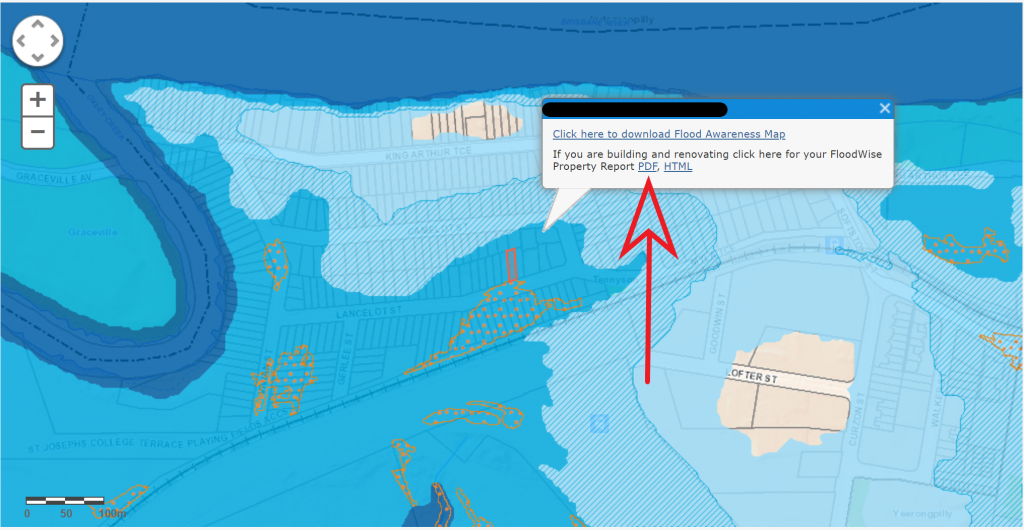
Step 4: Read your report it should look like this:
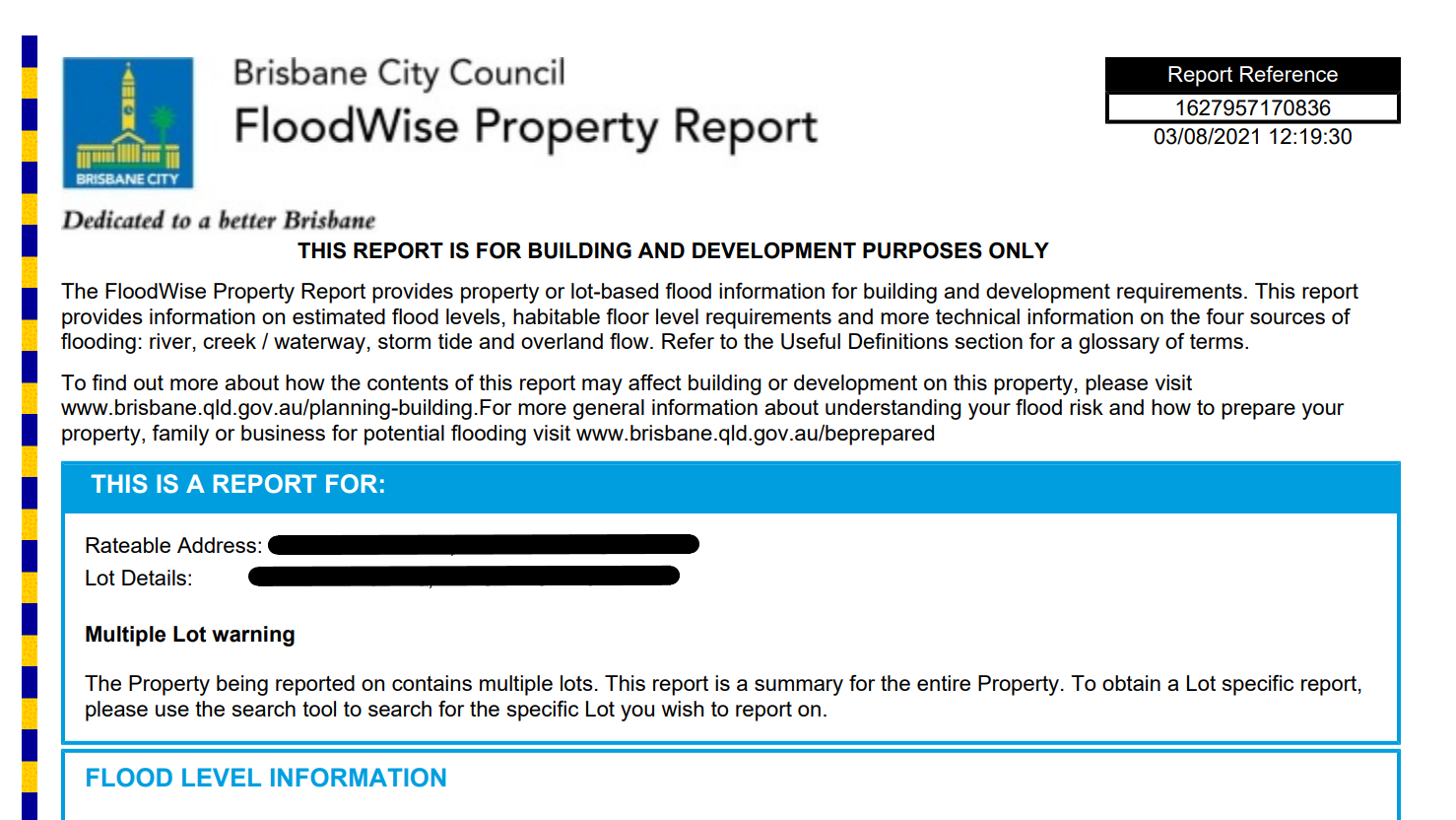
Are you looking at buying a property? Concerned about how flooding can impact your decision?
We’re here to help. Have a Buildi expert on your side.
How to Read FloodWise Property Report
Now that you’ve got your report it’s time to find out what it means for your build.
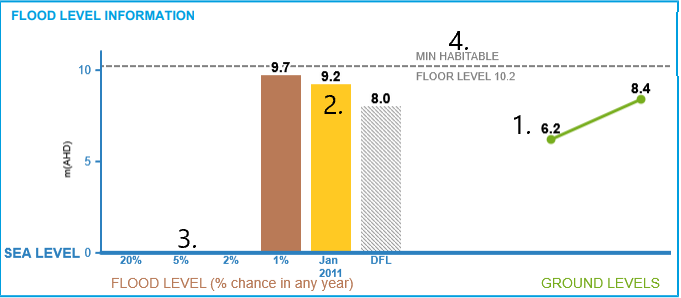
This graph shows the ground levels of a block of land in comparison to potential flood levels. I’ll use this example to explain how to read it.
- Green line: These are your lowest and highest (6.2 and 8.4 respectively) ground levels. This land is on a slant hence the difference in ground levels.
- Orange Bar: This is the estimated water level during the 2011 Brisbane floods. Here it reached 9.2m. This would have put the entire ground level of the land underwater.
- Bars above %: The bars that appear above the 20%, 5%, 2% and 1% chances indicate compare floor levels with the annual chance of that level occurring. The number above the bar indicates the floodwater level associated with this chance. In this example, the brown bar above 1% indicates that there is a 1% chance annually that a flood reaching 9.2m could occur.
- Dotted Line: This is the minimum habitable floor level. This is the height at which you are required to build all habitable living spaces in your house. For this home, it is 10.2m. This means all habitable floor spaces need to be built above 10.2m on this block.
What is classified as a habitable space?
Habitable living spaces are considered spaces in a home used for sleeping, living, cooking or dining. What this means for those building in a flood risk zone is that you must design your home to have all your living spaces above the minimum habitable floor level but can build non-habitable spaces below this level.
What is classified as a unhabitable space?
Unhabitable spaces in your home as areas in which human activity is less frequent. Places such as; laundries, storage spaces like your garage or sheds, and bathrooms. These areas of your home do not need to be above the minimum habitable floor level.
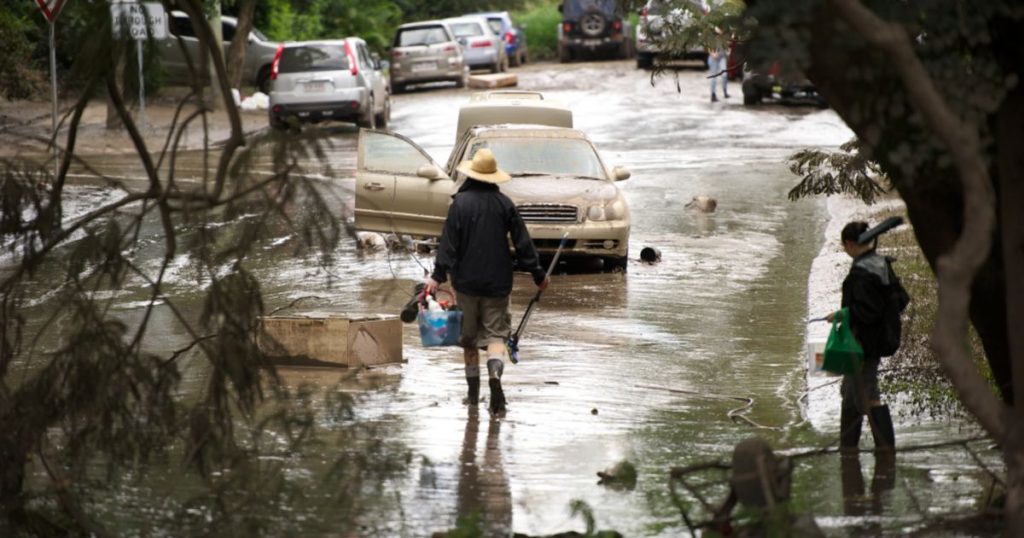
Understanding the chances of flooding
Let’s take a look at a different block of land to explain what the chances of flooding actually mean.
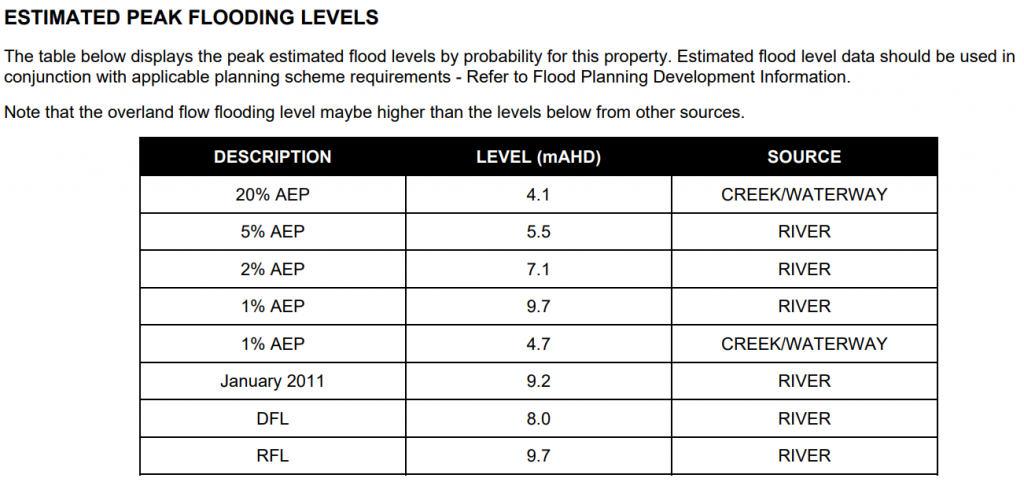
This block is more susceptible to flood with probabilities of flooding happening at multiple levels. In the description, AEP stands for Annual Exceedance Probability or how likely this type of flood event will occur per year. Let’s take the 5% AEP event for example. For this property, there is a 5% chance every year that a flood event reaching 5.5m will occur. Let’s look at how the council defines this risk.
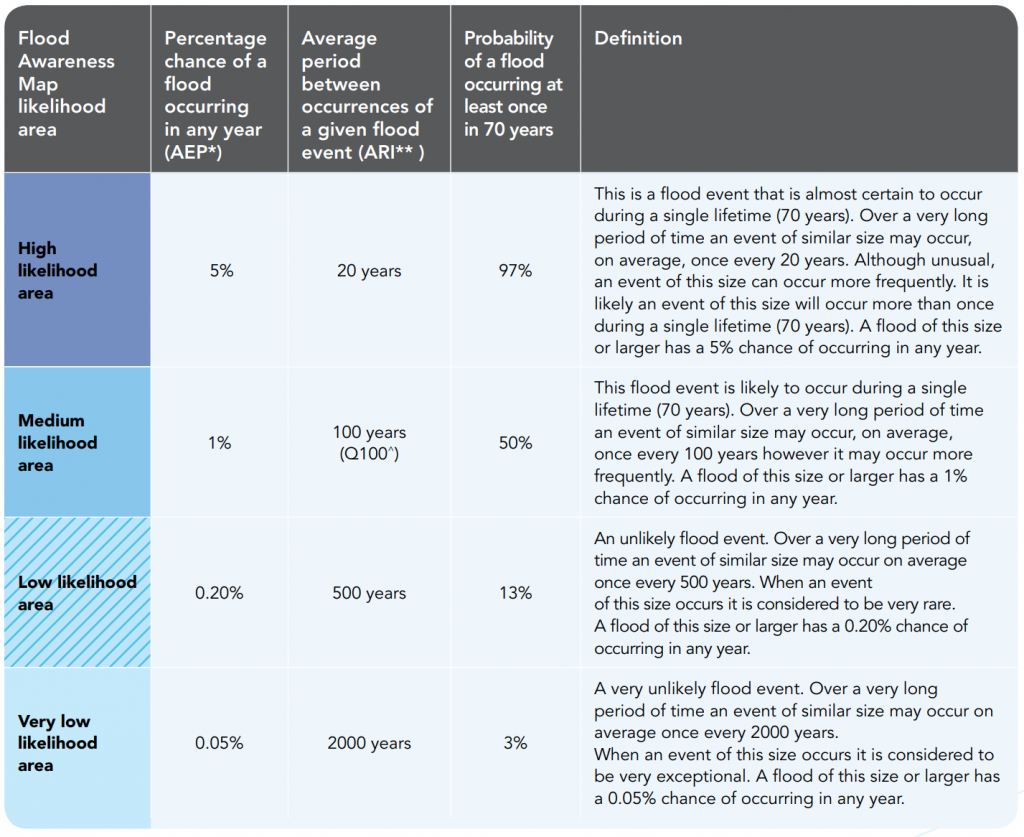
A 5% chance of flooding is considered almost certain to occur in a single lifetime (70 years) meaning if you were to build a home here, you’d have to make sure you were prepared for potential flooding.
Technical Summary
The technical summary breaks down the council’s flood impact estimates into more detail this is more suited to use by builders and developers who need to know the flood safe requirements of building your home.
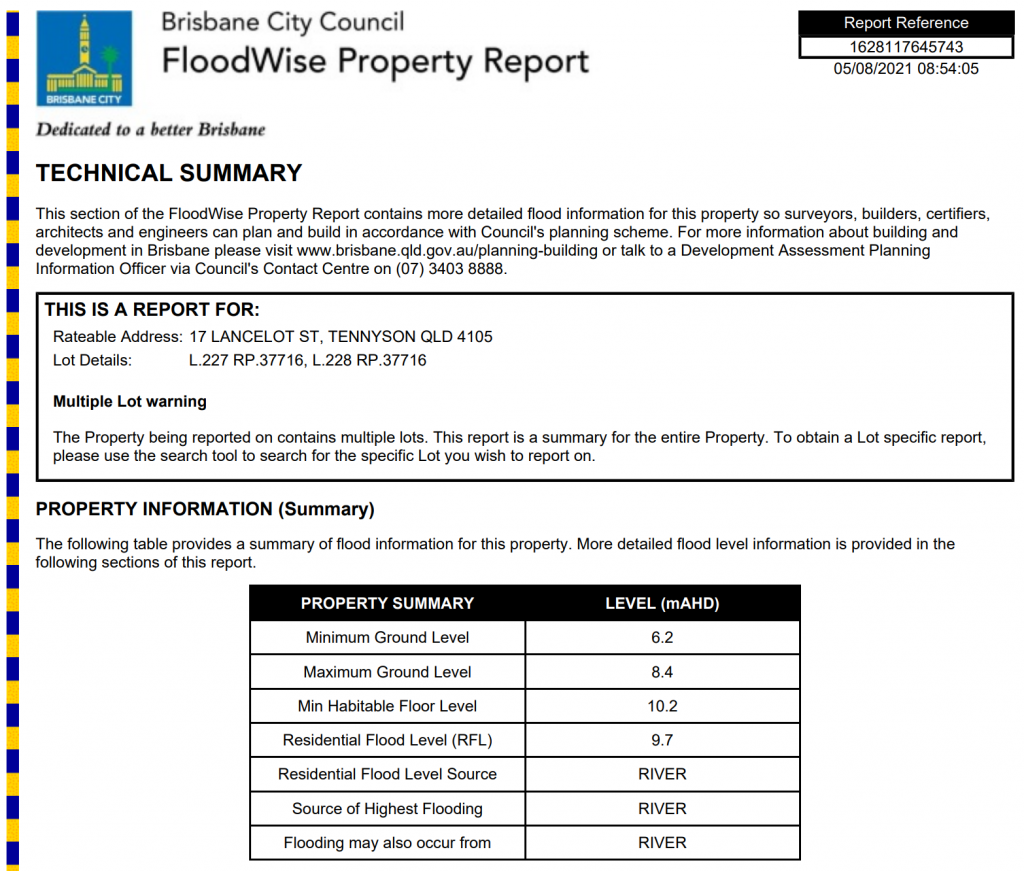
It goes into more detail about the likelihood of flooding as well as the expected sources of flooding that can affect your block.
Flood Overlay Code

The flood overlay code outlines the types of flooding that your block can be subjected to. This block for example is susceptible to types FPA2a and FPA2b. Different types of flooding originate from different sources and vary in severity. These types of floods are explained below.
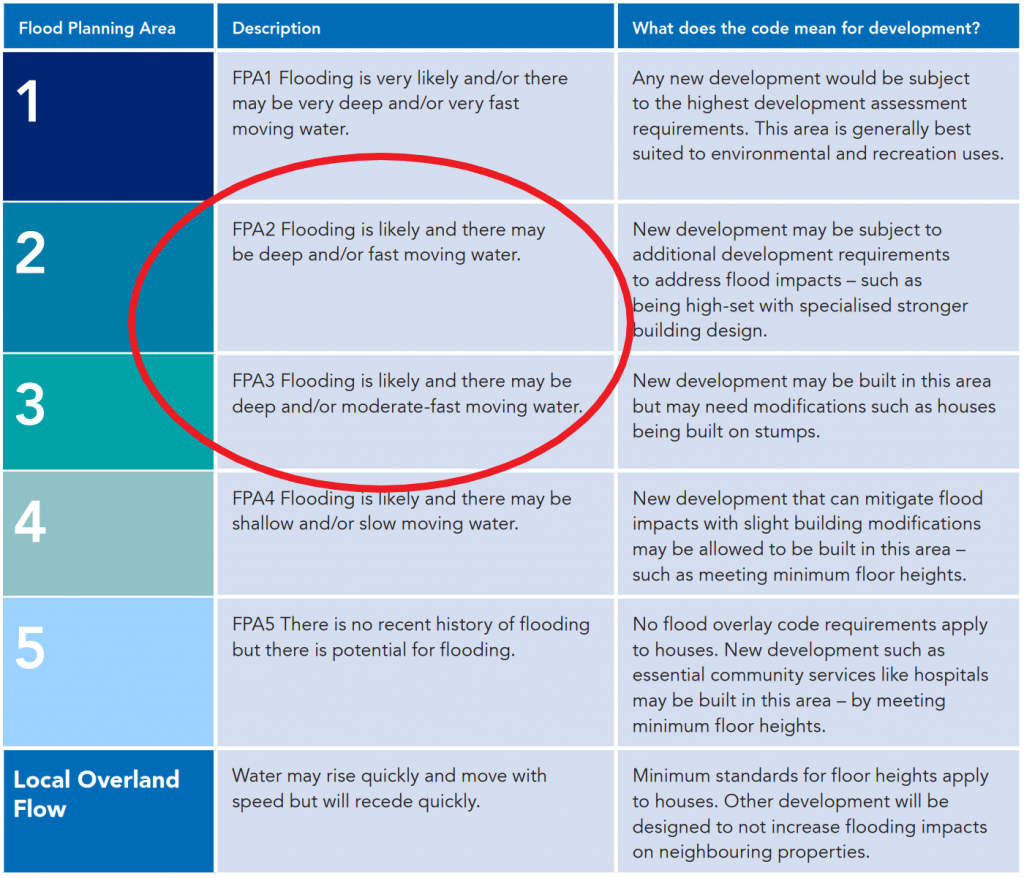
For this block of land, you’d be faced with the potential for deep and moderate or fast-moving water. This means that flood specific safety measures may need to be taken when building a new home on this block. Such requirements are usually that the house needs to be raised on stumps and in more severe flood areas stronger foundations that can withstand the flow of water might have to be used when building.
New Rules for Building in Brisbane After the 2011 Floods
Following the 2011 flood, Council implemented emergency town planning rules to guide development in suburbs affected by flooding which included the following:
- Setting floor levels in homes and apartments above either the 2011 flood level or the defined Brisbane River flood level, whichever is the higher.
- Allowing houses in flood-prone areas to be built higher than standard buildings to protect homes from flooding.
- Following feedback from the community, Council has now adopted these requirements into the City Plan.
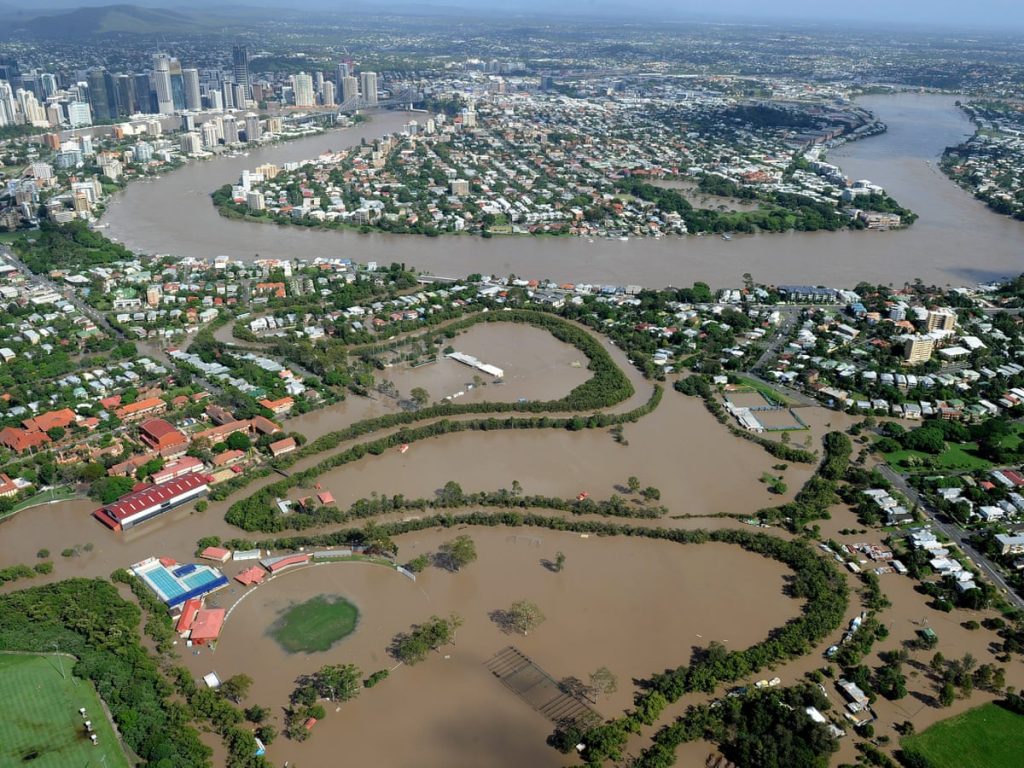
Types of Floods in Brisbane
When reading your flood report you’ll note that there are 4 different sources of flooding taken into account. These all have different causes and solutions to how builders will prepare your home to withstand them.
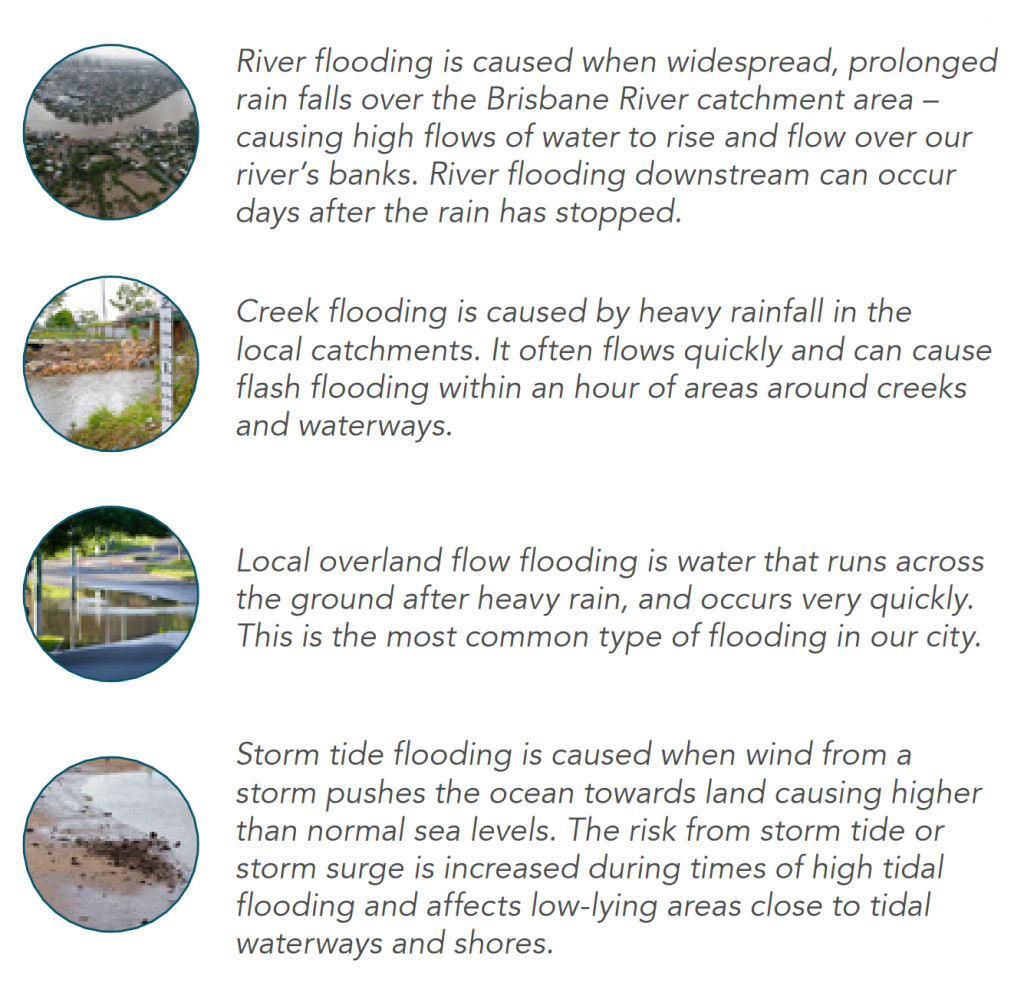
The 2 Main Catagories of floods
These 4 types of floods can be divided into 2 categories. One being river and creek flooding as the nature and effect of these floods are quite similar. The other category is overland flow.
1. River and Creek Flooding
These types of flooding occur when a body of water becomes overfilled usually due to rain. The body of waters usual methods to regulated its levels become overwhelmed and begin to spill out. In the case of the 2011 floods, the dams that capture rainwater around Brisbane became too filled and had to be released causing the Brisbane river to overflow into the city.
2. What is overland flow?
Overland flow is the movement of water over the land, downslope toward a body of water. Usually resulting from rainfall; it’s this rainwater that flows across the streets until it finds a body of water to be absorbed into. Overland flow is becoming more common as we further develop our landscapes and cities. As more structures and concrete take up land water has fewer places to go to be absorbed naturally. This is resulting in more flooding in developed areas.
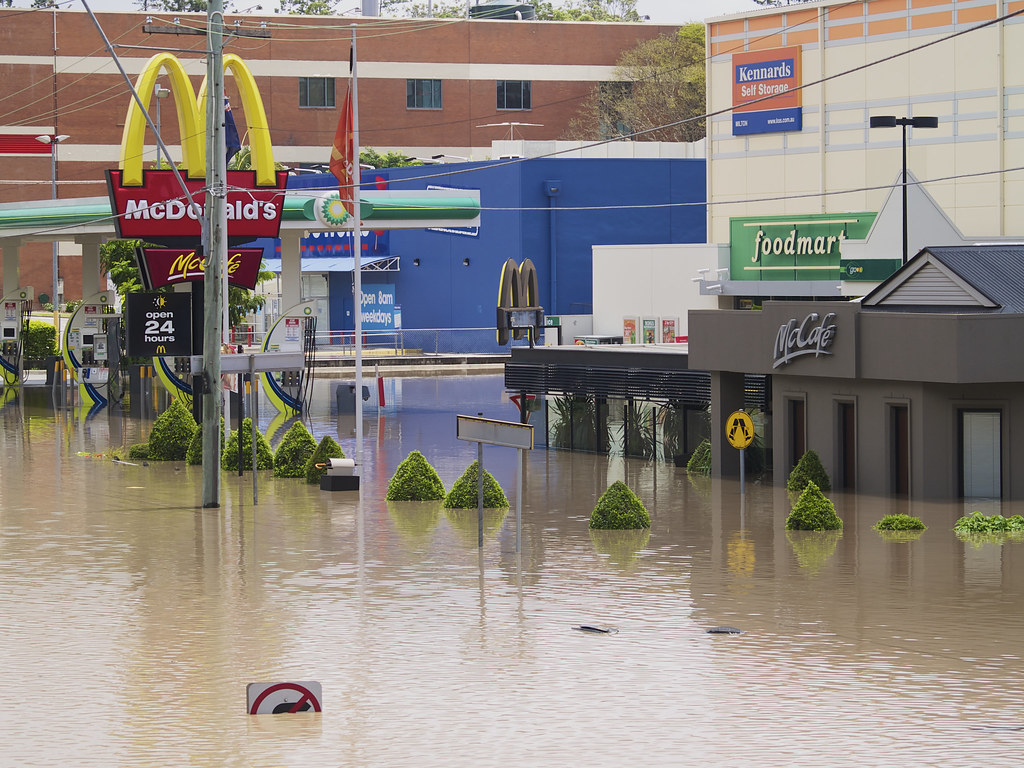
Building in a Flood Zone
If choosing to build in a flood zone there are a few extra steps that will need to be considered before construction begins.
Hydraulic Engineer Inspection
Before you’re able to start designing your home a hydraulic engineer will need to come and assess your land. They will work out how a flood would impact the land by working out how different types of floods would flow across it. This will determine a set of rules specific to your new home to ensure it is within council standards and be capable of withstanding flooding. A hydraulic engineer needs to be hired for due diligence and will cost you somewhere between $2500 – $3000.
Stump vs Slab Construction
If building in a flood zone you will likely have to use the stump construction method to build your home. The reason being that a standard slab on ground construction only gives you about a few hundred mm above the ground, nowhere near enough to avoid floods. A stump construction has the ability to raise your homes’ habitable spaces well above where the water level might reach. Something to take note of with stump construction is that the higher your home is raised the more expensive it becomes.
How different types of floods affect your build
As broken down before Brisbane is capable of throwing a variety of floods at its inhabitants. The difference between a river sourced flood and a creek sourced flood is that your house needs to prepare for either saltwater flooding or freshwater flooding.
- Salt water flooding means that all the metals used in your homes frame and base need to be galzanised. This prevents them from rusting should they be submerged. Failure to do so can lead to a weakened foundation and evenual decay or collapse of your home if not done.
- Fresh water flooding is less destructive than salt water and less likely to cause the corrision to frames and metals in your home due to lower levels of salt in the water. While this is still a risk due to fresh water still have salt in it, creek sourced flooding will lead to a more favourale outcome.
Why are Flood regulations so strict in Brisbane?
After the 2011 floods, the Brisbane City Council tightened up regulations for home construction in flood risk areas. While it may seem this was to protect future residents from the devastation of floods this isn’t quite the case. After the 2011 floods, the council had to buy back a lot of properties that had been impacted by the flood. The blame fell on the council as they had approved plenty of home builds that would soon be destroyed or damaged by flooding. Council approval guarantees that the project is up to all safety standards, this includes approval that the home would be flood safe. This oversight cost the council a lot of money and was a mistake they made sure would not happen again.

Building Flood Resilience in Brisbane
As we pass the 10 year anniversary of the 2011 Brisbane floods it becomes easier to forget the dangers that flooding can pose. It’s important to keep in mind the measures to take before building even if your builders don’t mention it.

Step 1: Understand and Perpare
Understand which parts of your property are affected
A Property Level Survey will show you the exact levels of the land and building on your property. You can obtain one from a professional surveyor. Compare these levels to those in the FloodWise Property report from Council, to understand; what parts of your property are likely to be affected by flooding, how often it might occur, and how deep that flooding could be.
Sign up for Flooding alerts
The Brisbane City Council has set up a free service that alerts you if a severe storm, flooding or other weather event is likely to occur in your area. You can sign up here.
Make your build flood resilient
Discuss Flood resilient building strategies with your builder
If you’ve found out your building is in a flood-affected area talk to your builder about how they can build your home in the most resilient way possible. Some of these strategies include raising electrical outlets and hot water units and using flood-resilient materials such as solid core doors.
Use floor resistant materials and designs
- Seperate up & down stairs electrical circuits, lower chances of flooding disrupting your homes power.
- Use Fibre Concrete sheet in your walls. This is a water proof concrete that is usally used in wet areas such as bathrooms and kitchens.
- In areas that could flood do not use carpet. Instead use water resilient flooring such as hard wood, tiles or polished concrete.
- Use solid core doors not hollow core.
- Use tiles or floor resiant hard wood for skirting boards.
- Remove the first stair riser on closed staircases so that water can flow underneath it instead of getting trapped.
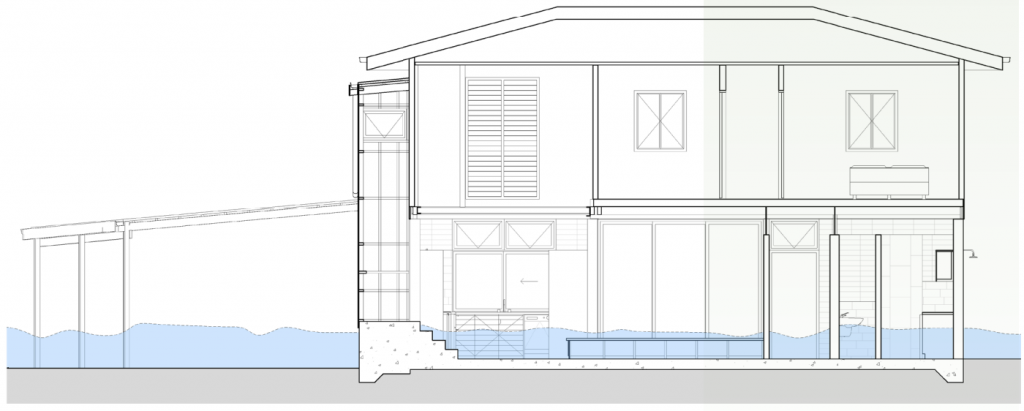
Looking for a builder but not sure where to start? Click here to see our ultimate list of Brisbane Builders. From there you can check out our Builder Reviews and find out more about some of Queensland’s biggest builders!
Suburbs Affected by 2011 Floods
After the 2011 the Brisbane City Council released a list of suburbs that were affected by the flood.
- Acacia Ridge
- Albion
- Anstead
- Archerfield
- Auchenflower
- Balmoral
- Bellbowrie
- Bowen Hills
- Brisbane City
- Brookfield
- Bulimba
- Chapel Hill
- Chelmer
- Coopers Plains
- Coorpooroo
- Corinda
- Darra
- Durack
- Dutton Park
- East Brisbane
- Fairfield
- Fig Tree Pocket
- Fortitude Valley
- Graceville
- Greenslopes
- Hamilton
- Hawthorne
- Hemmant
- Herston
- Highgate Hill
- Indooroopilly
- Jamboree Heights
- Jindalee
- Kangaroo Point
- Karana Downs
- Kelvin Grove
- Kenmore
- Kenmore Hills
- Kholo
- Lytton
- Middle Park
- Milton
- Moggill
- Moorooka
- Morningside
- Mount Ommaney
- Murarrie
- New Farm
- Newstead
- Norman Park
- Oxley
- Paddington
- Pinjarra Hills
- Pinkenba
- Pullenvale
- Riverhills
- Rocklea
- Salisbury
- Seventeen Mile Rocks
- Sherwood
- Sinnamon Park
- South Brisbane
- St Lucia
- Sumner
- Taringa
- Teneriffe
- Tennyson
- Toowong
- Wacol
- West End
- Westlake
- Willawong
- Wilston
- Windsor
- Woolloongabba
- Yeerongpilly
- Yeronga
Should I Be Worried?
As I mentioned earlier Brisbane does face the risks of flooding however past experiences have prepared us well to counter the risks. The Floodwise Property Reports helps you decide for yourself whether the amount of risk associated with your block is worth the build. It also gives builders the right information to build your new home safely if another disaster such as that in 2011 does happen.

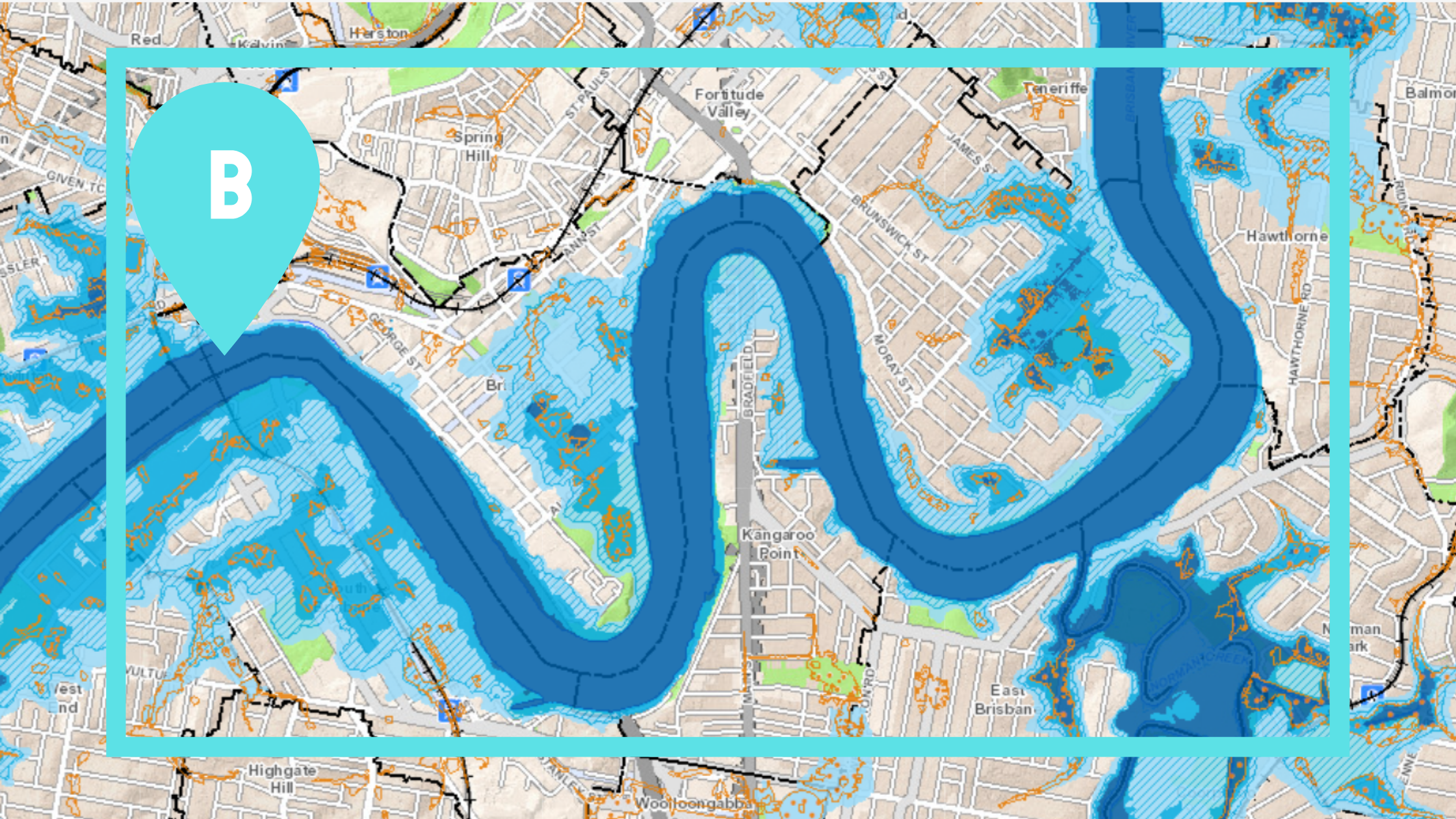
0 Comments